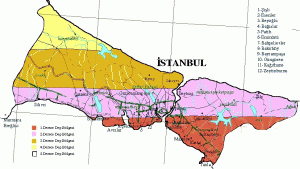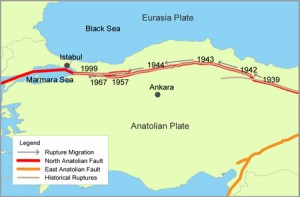Biomimicry pioneer Janine Benyus has wisely observed that Nature is a design studio, where optimizing sustainability (of planetary lifeforms) and resiliency (navigating climate, species and extraterrestrial impacts) comes through millions of years of adaptability experiments.
Nature Values Diversity
Nature relies on multiple species to sequester carbon and improve nutrients for soils in vastly different climates and geographies. Nature relies on regular seismic, forest fire, flood and migration patterns to disseminate species diversity, and to capitalize on the extreme events as fortuitous opportunities for establishing new homes for life and species’ advantage.
Our species acts constantly to master Nature, to overcome its unpredictability. In doing so, we seem increasingly to favor the politics of monocultures – where one “go right” thinker group tries to outshout the “go left” thinker group, setting in motion a battle of monocultural belief as the supreme goal, regardless of its impacts on people, their neighborhoods and the planet.
Natural human rights to a home, healthcare, a job, retirement and other refined benefits of modernity in the “Developed World” are Nature’s goals for other species in repurposing their ecosystems and behavioral economics. On the one hand, “survival of the fittest” rules the animal and plant kingdoms providing nutrition, shelter and reuse of organic waste. On the other hand, each species’ grazing in close proximity and instincts for social response can assure more of a given species survive, especially when threatened from internal and external predators and hazardous conditions.
Monoculture Politics
While Nature cherishes diversity of adaptive response, as humans, our political dialogue seems often to steer by which monologue of belief system is being reinforced by bludgeoning the perceived “other side.” Instead of “human rights,” champions of one demographic’s rights shrilly and gleefully can ignore other’s rights. For example, opponents of universal health care seem perfectly happy to ignore the biological and economic pandemic effects of letting the sick remain in suffering, dragging down urban economic vitality and intergenerational family survival. Likewise, champions of women’s rights go silent when it comes to supporting the equal parenting and economic survival rights of men. These tugs of war set up and maintain monoculture beliefs. They create tribes to in-fight ideals. They consume vast bandwidth on social and mainstream media. They obscure the basic human dignity that all demographies, geographies and contexts for human quality of life demand, with equal concern, just in their right to speak for consequential Natural good.
Nature, the Design Coach for Leveraging Diversity
It is time to shed monoculture politics as social ideal. Where Natural Rights could life all boats, the results of letting everyone fend for themselves – for finding a good education, job, home, honorable work, healthcare, nutrition – pulls us downward.
To justify monoculture politics, certain actors in each expert community get funded to build standalone White Ivory Towers, replete with algorithmic math that “assumes away” most other real world constraints and interdependencies with other aspects of quality of life, in order to reach their funder’s ideal optimization or preferred solution or pre-ordained status quo.
Big Data springs from Big Models. It is time to begin linking the languages of Big Models so as to build more adaptation from the limited resources each expert group (community of practice) is likely to receive through the political reality of annual budget cycles and recurring recessions.
Bruce Cahan is CEO and co-founder of Urban Logic, a nonprofit that harnesses finance and technology to change how systems think, act and feel. He is an Ashoka Fellow, aa Lecturer at Stanford University's Department of Management Science & Engineering, a Distinguished Scholar at Stanford mediaX and a former CodeX Fellow at Stanford's Center for Legal Informatics.
Bruce was trained as an international finance lawyer at Weil Gotshal & Manges in NYC (10 years) and as merchant banker at Asian Oceanic in Hong Kong (2 years).
Bruce graduated The Wharton School at the University of Pennsylvania (B.S. Economics 1976) and Temple Law School (J.D. 1979). Bruce has been licensed to practice law in California (2006), New York (1980) and Pennsylvania (1980).
More Posts - Website
Follow Me:









